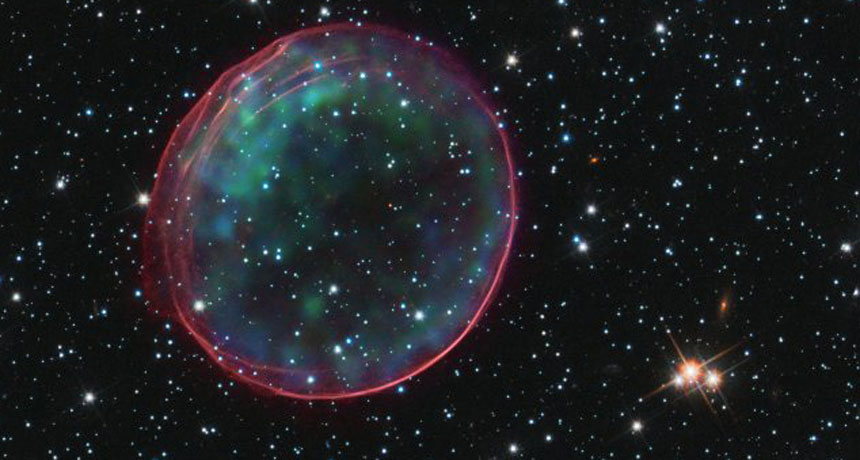Questions for ‘Mapping the Unknown’

A blast wave ripples outward from a type 1a supernova. Light from these explosions can help map changes in the evolution of the cosmos.
NASA/Wikimedia Commons
Share this:
- Share via email (Opens in new window) Email
- Click to share on Facebook (Opens in new window) Facebook
- Click to share on X (Opens in new window) X
- Click to share on Pinterest (Opens in new window) Pinterest
- Click to share on Reddit (Opens in new window) Reddit
- Share to Google Classroom (Opens in new window) Google Classroom
- Click to print (Opens in new window) Print
To accompany feature “Mapping the unknown”
SCIENCE
Before Reading:
1. If people didn’t have maps (or GPS systems, today) to tell them where they were, how would human societies on Earth be different?
2. All of the land on Earth was once one giant continent. How might the world be different if it still were just one continent?
During Reading:
1. What was Pangaea?
2. What are tectonic plates?
3. What did researchers at the University of Sydney discover about the movement of tectonic plates?
4. Why is it difficult to map the movement of tectonic plates on Earth?
5. What do the magnetic “stripes” on the ocean’s floor help scientists figure out?
6. According to the story, what surprising discovery did astronomers make in 1998?
7. What is dark energy?
8. Why does studying the brightness of different supernovas help astronomers map the sky?
9. What percentage of Earth remains largely unexplored, and why?
10. What are two ways that plate tectonics relate to climate change?
After Reading:
1. If you could “rewind” back to a time soon after Pangaea broke apart, what kinds of differences in Earth’s topography might you see?
2. Dark energy is the mysterious force that pushes things apart in the universe. It makes up about 70 percent of the energy in the universe. How might the sky be different if dark energy made up only 30 percent of the energy? What if it made up 95 percent of the energy?
MATH
1. Continents typically creep along at about 5 centimeters (2 inches) per year. At this pace, how far would it have moved after 60 years, 180,000 years and 5.1 million years? Show your work.
2. Start with the distance a continent would have moved after 5.1 million years at the pace above. What if that continent had sped up its pace to 18 centimeters (7 inches) for the last 1.1 million years of that period? How much farther would the continent have traveled during the 5.1 million years? Show your work.